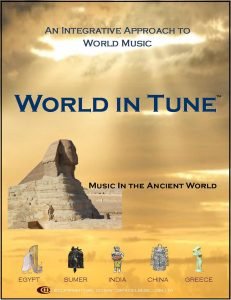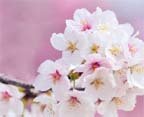If you’re looking for a scholarly musicological approach to the study of ancient music — you’ve come to the wrong place. But if you are in touch with students every day and need material which might help them become interested in the music and people of past eras — then read on. World In Tune is a program which presents threads of knowledge, of mysteries, stories of the past while making room for the student, with his individual inclinations, to weave his or her own tapestry –to make her or his own discoveries.
How this Works
WIT presents facts and also the threads which lead to and from these facts. However, at no time is the student obliged to memorize or follow these ideas; rather he or she is presented with a question, a mystery to pursue or not.
For instance, if you wonder at the colossal output of the art and architecture of ancient Egypt which has survived for thousands of years to our own day, you can’t help but to realize that behind these accomplishments was a people with goals, hardworking and industrious, very close to the modern Japanese who brought their country from medieval times to the modern world in a very short time. Now take a statement from Curt Sachs quoting Josephus as saying the musical mode of ancient music was equivalent to E, C, B, A, F descending (can be on any pitch), the mode so prevalent in Japanese music. Coincidence? Possibly, or could music actually have an effect on a person’s psyche, or the opposite—could a culture and people have their own soul-like feeling which in turn produces certain tendencies in the arts and other spheres of daily life? This idea is presented in World In Tune, mentioning Josephus in passing but most of the emphasis is given to the example of the Cherry Blossom Song – “Sakura” and saying that Egyptian music could sound a little like this. The questions are left as questions, whether the student pursues them is up to him or her.
Most of WIT is like this. It presents true facts and knowledge not only of Music but of History, Math, Humanities and the Arts of past cultures in a way (especially by stories) that students can explore to make their own discoveries. Our goal for students is to try to have them look at their studies in a more holistic, questioning way and bring to bear their own interest, questions and critical thinking into the classroom and hopefully into their own life.
